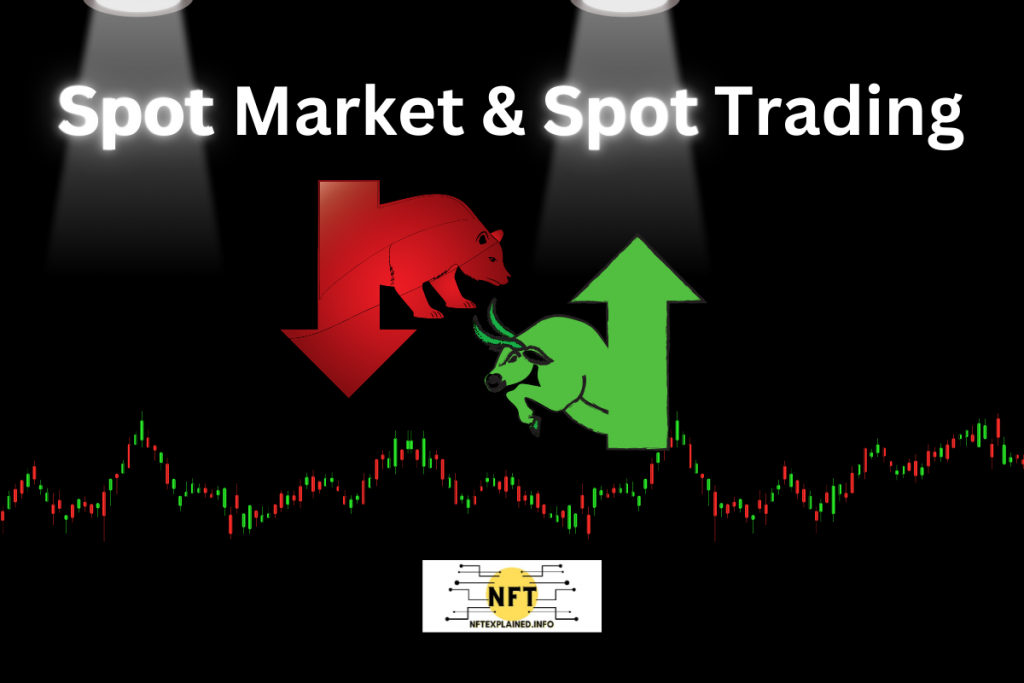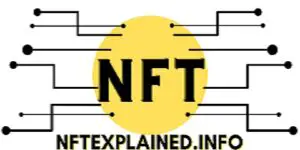
While the spot market seems like an intimidating term, it is likely something that you are very familiar with and have used numerous times before. In this article, our team will break down everything related to spot markets and spot trading, two more technical terms.
What Is The Spot Market?
The spot market facilitates the buying and selling of financial assets – stocks, bonds or crypto – via real time market prices; this allows buyers and sellers to transact on the ‘spot’. To trade in the spot market, you typically need to own the assets. Continue reading to learn more…
You likely have already traded on a spot market before; examples of sport markets you may have used include Binance, the NYSE, and even the NASDAQ. Aside from crypto and stocks, other markets like Forex and commodity markets are also spot markets.
Via modern, electronic trading, the spot market allows buyers and sellers to transact instantaneously; this occurs when both the buyer and seller agree on a price. Back ‘in the old days’, this would occur in T+2 days – which means trade date + 2 additional days.
Trade date + 2 additional days was only needed when physical verification was an essential aspect of trading assets; this is certainly not the case with crypto, as the market is open 24/7, and no settlement is needed once both parties have agreed to the transaction.
In the spot market you typically need to have ownership of the asset in order to trade; one of the most common trades in the spot market is cash in exchange for the financial instrument – e.g. the purchase of stocks or cryptocurrencies.
There are two options for accessing the spot market: exchanges or over-the-counter.
How Does Spot Market Trading Occur?
Spot market trading can occur via an exchange or over-the-counter. In an exchange, the broker will take a % of the transaction for ensuing regulations, security and more. Over-the-counter (OTC) transactions occur directly between buyers and sellers; this means traders directly secure the price.
Centralized exchanges like Binance, take a small percent (roughly 3%) on most transactions. However, certain rare spot trading pairs including $BTC trading pairs and $BUSD are subject to 0% fees on Binance. The 3% on select spot trades is what allows Binance to make money regardless of how the overall market is doing.
Centralized exchanges take a % for the value they provide; for example, regulations are not something that the trader will need to worry about. Centralized exchanges also own your assets and have custody of them – that service is provided by exchanges. That is one service our team doesn’t recommend you partake in, as you should ideally keep your assets on a hardware wallet.
The other option for those who are looking to trade cryptocurrency via the spot market is through a decentralized exchange (DEX). In this particular cryptocurrency exchange, transactions are facilitated without a middle man.
In a DEX, a miner, which is a type of validator node, needs to confirm the smart contract. The smart contract is the predetermined set of code (or rules) which will state that the buyer is purchasing for x price and that the seller is selling for x price.
If these requirements are met, the smart contract will execute and a miner will be rewarded for verifying the transaction (or ensuring it is true and that it goes through). The miner is rewarded with something that is known as a gas fee in the blockchain world and is the reward for validating the transaction.
If you have used a DEX, you will know that gas fees greatly vary in price and depend on the congestion of the network (or the amount of people looking to make a transaction). At this point in time you can typically expect to pay US $10 for a DEX transaction – sometimes much more and sometimes far less.
One important aspect to note is that ‘slippage’ may occur; slippage is the difference between the price that a trade is expected to execute at and the price at which it actually executes. In the spot market, slippage occurs when there is high volatility or a large amount of transactions being executed. This is something you may have experienced in the stock or crypto market.
What Is Spot Trading?
Spot trading is trading that occurs on the spot market – which could be with crypto, stocks or commodities; in the spot market transactions settle instantaneously. Spot trading is done via executing ‘market orders’ where buying/selling is done immediately – at the best available price.
Spot traders are seeking to profit by purchasing an asset at the spot (aka at the asset’s market price), HODLing and then selling it for a price greater than what the asset was purchased at.
With spot trading, there is no guarantee that the spot price will be the actual price that the trade is executed at; this is due to changes in the market/spot price (which may occur during the – typically – short period of time when the asset is being bought or sold). Again, this is what is known as slippage.
Spot Market VS Future Market
In the spot market, trades execute immediately – or at the time the market order is sent out – and both the buyer and seller get the intended result on the ‘spot’. In the futures market, individuals and organizations enter into a contract for the future buying/selling of the asset at a predetermined future date.
In the futures market, buyers and sellers, which are typically individuals and organizations, agree to trade a specific good/asset for a specified price in the future. When that future day comes, the buyer and seller will typically come to a cash settlement on the price difference. The futures market is a way to speculate on future market movements and is considerably more risky than the more traditional spot market you are likely familiar with.
To trade futures, the trader needs to have margin or deposit a small amount of funds from the contract to use as margin; this is how potential losses are covered. Following this, the amount of funds is added or taken away from the traders account each day; one can sell (or close) the position before the expiration date.
If you have not closed the position before the expiration date, you will either receive or have to pay the difference between the contract price and spot price upon expiration of the contract.
Since the future market is more volatile, you will find that many exchanges require you to be approved before you are able to trade in this market.
Spot Trading VS Margin Trading
Spot trading is the trading of financial instruments that occur on the ‘spot’ or at the current market price the asset is valued at. Margin trading is the trading of financial instruments using borrowed funds (margin), which incurs interest, to increase buying power; this amplifies gains or losses.
Like futures trading, margin trading is also more risky than spot trading as the potential to gain or lose is increased due to higher purchasing power. The process of margin trading requires the trader to deposit an initial amount into the trading account before funds from a third party (e.g. broker) is received. If funds fall below ‘maintenance margin’, the trader must deposit more funds or sell some of the position in order to maintain the balance at that specified level.
What Are The Advantages/Disadvantages Of Spot Trading?
Advantages of spot trading is the simplicity as prices are more transparent because they typically execute immediately or on the ‘spot’, without any additional cost of holding the asset (unlike futures) and high liquidity. The disadvantages include limited leverage and slippage that may occur.
With futures, there may be additional cost to holding the financial instrument; this is known as carrying cost. An example of carrying cost would be the need for the trader to maintain the initial margin requirement for the futures contract.
Our team is seeking to provide educational material and not financial advice; but, it is critical to note that trading with this type of leverage is extremely risky and if your position fell below the initial margin requirement, you may incur huge losses. If you trade on the spot, this won’t be a concern as there is no additional cost to holding the asset (once the trade is executed).
Let our team know what you think about spot trading by connecting with us on Instagram, Twitter & TikTok! As well as subscribe to our YouTube!
Additionally, please consider supporting our team’s content creation through doing business with our partners: Trade stocks & crypto on Webull – get 2 free stocks. Buy a Ledger hardware wallet. U.S. users can get a crypto trading discount on Binance!

